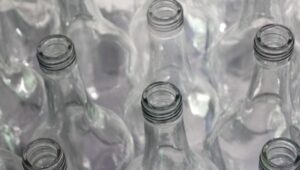The attempt at a green breakthrough was there and the commitment too, but after two years of research and an avalanche of money spent Lego has thrown up its hands. Entirely recycled plastic bricks will not happen, at least for the time being.
Table of Contents
Lego’s stop to recycled plastic
The Danish company’s idea, on paper, was a masterpiece of eco-sustainability. Namely, creating bricks from plastic bottles destined for recycling. This was no mere greenwashing strategy or sudden dazzlement.
The world’s most famous toy construction company has been espousing environmentalist policies for years. It is since 2012 that Lego has set a zero plastic goal, to be achieved by 2030. But finding a replacement for the world’s most popular and cheapest material is not easy.
And it is precisely in order not to place a greater burden on the environment that Lego has chosen to abandon plastic recycling for the making of its celebrated bricks. The process would eventually aggravate production cycles, making them even more polluting.
Why goodbye to recycled plastic
Lego bricks are composed of 80 percent Abs (acrylonitrile-butadiene-styrene) polymer. It takes nearly 2 kilograms of oil to make 1 kilogram of Abs.
That of plastic obtained from recycling old bottles was just one of the alternatives hypothesized. Lego has tested more than 200 alternative materials to Abs, including plant-based plastics made from sugar cane, corn starch, biomass, and food waste.
None of these materials have proven satisfactory so far, so the research continues. This is no small investment, considering that during the testing phases to make certain types of productions Lego was forced to acquire new machinery and new production protocols.
Beyond Lego’s commitment, there are many initiatives put in place in recent years to limit plastic use. From stopping single-use cutlery to anti-plastic bonuses, from the war on disposable containers to shopping vouchers in exchange for recycled plastic bottles.
Lego’s commitment to the environment
At Lego, the last alternative tested was Pet, or the aforementioned recycled plastic. Tim Brooks, Global Head of Sustainability at Lego, dismissed it by claiming that it is “like trying to make a bike out of wood instead of steel.”
Plastic derived from Pet recycling is less durable than that made from classic Abs. So Lego would be forced to mix the mixture with other ingredients. The increased expenditure of energy to process the materials would increase pollution instead of reducing it. Tim Brooks did not hide his bitterness: “It was a disappointment.”
Polymer Abs therefore remains, at least for the time being. But it will be lightened. Lego has decided to add a gradually larger component of recycled or plant-based materials to the compound. In addition to the green goal already mentioned, there is that of cutting pollutant emissions by 37 percent by 2032 from 2019 levels.
The search for environmentally sustainable materials continues, with Lego tripling its investment to nearly 3 billion euros per year by 2025. The costs of green acceleration will not fall on consumers’ pockets, the company assures. The first, less challenging goal is to gradually replace plastic bags with paper bags at the point of sale.
Read also: 10 great alternatives to single-use plastics for everyday use












